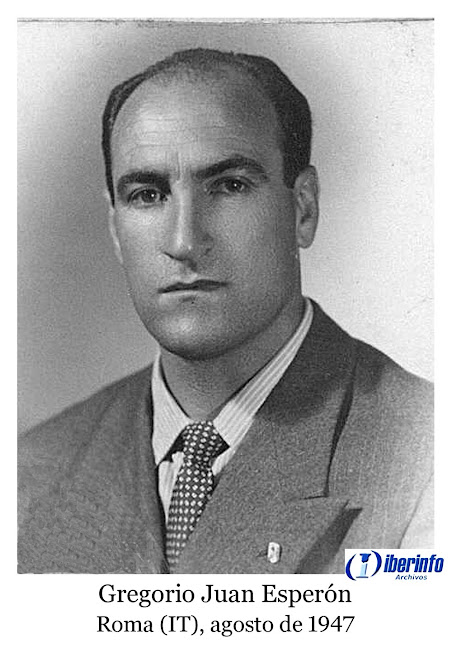11 DE NOVIEMBRE DE 1918-ARMISTICIO DE COMPIÈGNE. FIN DE LAS HOSTILIDADES DE LA PRIMERA GUERRA MUNDIAL
Hace más de un siglo, el día 11, del mes 11, a las 11 horas, de 1918 se ponía fin a las hostilidades de la Primera Guerra Mundial, quedando en silencio las armas de los ejércitos enfrentados.
Era la madrugada del 11 de noviembre de 1918, cuando en un vagón de tren detenido en el bosque de Compiègne (departamento del Oise, en la región de Hauts-de-France), se reunieron los representantes de las potencias aliadas, que posteriormente firmaron el armisticio con Alemania.
El hecho ponía fin a las acciones bélicas de la Primera Guerra Mundial, en la que se enfrentaran las potencias centrales: Alemania, Austro-Hungría y Turquía (más tarde se sumaría Bulgaria), contra la denominada Triple Entente, integrada por Gran Bretaña, Francia y Rusia (a la que luego se sumarían Japón, en 1914, Italia, en 1915 y Estados Unidos, en 1917)
El Imperio Alemán fue la última de las Potencias Centrales en rendirse; previamente lo habían hecho Bulgaria, el Imperio Otomano y el Austro-Húngaro.
Así, con el Armisticio de Compiègne se ponía el fin a las hostilidades en el frente occidental de la Primera Guerra mundial, entre los Aliados y Alemania. Los principales firmantes fueron Matthias Erzberger, jefe de la delegación alemana; el almirante alemán Ernst Vanselow; el conde alemán Alfred von Oberndorff, del Ministerio de Relaciones Exteriores; el general alemán von Winterfeldt Detlof; el oficial naval británico capitán Jack Marriott; el contraalmirante George Hope: el primer lord del Mar almirante sir Rosslyn Wemyss y los representantes de Francia, mariscal Ferdinand Foch, comandante en jefe de las fuerzas de la Triple Entente (Tercera República Francesa, Reino Unido de Gran Bretaña e Irlanda y el Imperio ruso, a los que se unieron el Reino de Serbia y Bélgica, tras las acciones de Austria) y el general Maxime Weygand.
Durante cuatro años y tres meses de guerra los contendientes movilizaron más de sesenta y cinco millones de hombres y se produjeron más de nueve millones y medio de muertos en los campos de batalla; debiendo sumarse seis millones y medio de inválidos de guerra, más de cuatro millones de viudas y el doble de huérfanos. Veintiún millones de personas resultaron heridas y casi diez millones de civiles murieron, indirectamente, víctimas de la guerra. Los dos países más afectados fueron Alemania y Francia, quienes enviaron a los campos de batalla aproximadamente al 80% de su población masculina entre los 15 y 49 años de edad.
Tras el armisticio siguieron seis meses de negociaciones y la Conferencia de Paz de París; finalmente, el 28 de junio de 1919 en el Salón de los Espejos del Palacio de Versalles los países aliados firmaron, con Alemania, el tratado que recibiera el nombre del lugar; suscribiéndose otros a lo largo del siguiente año con cada una de las potencias derrotadas.
El Tratado de Versalles fue firmado por más de cincuenta países. Con éste tratado terminó oficialmente el estado de guerra entre la Alemania del segundo Reich y los aliados de la Primera Guerra Mundial. Se firmó al cumplirse exactamente cinco años del atentado de Sarajevo, en el que fuera asesinado el archiduque Francisco Fernando, príncipe imperial de Austria, príncipe real de Hungría y Bohemia y heredero al trono austrohúngaro; causa directa de la Primera Guerra Mundial.
El Tratado de Versalles entró en vigor el 10 de enero de 1920.
Éste tratado obligó a Alemania a reducir sus tropas a la mitad, pagar grandes indemnizaciones a los países vencedores, ceder la totalidad de sus colonias y devolver Alsacia-Lorena a Francia. No obstante, no tuvo éxito: Alemania manifestó que había firmado el armisticio con falsos pretextos, creyendo que la paz era una “paz sin vencedores”. El rechazo generalizado de Alemania hacia el tratado y sus autores se considera una de las causas de la Segunda Guerra Mundial, ocurrida dos décadas más tarde.
Una de las más importantes y controvertidas disposiciones del tratado estipulaba que las Potencias Centrales (Alemania y sus aliados) aceptasen toda la responsabilidad moral y material de haber causado la guerra y, bajo los términos de los artículos 231-248, deberían desarmarse, realizando importantes concesiones territoriales a los vencedores siendo obligados a pagar exorbitantes indemnizaciones económicas a los Estados victoriosos.
Tras el fin de la guerra, cuatro grandes imperios dejaron de existir: el alemán, el ruso, el austrohúngaro y el otomano. Los Estados sucesores de los dos primeros perdieron una parte importante de sus antiguos territorios, mientras que los dos últimos se desmantelaron. El mapa de Europa y sus fronteras cambiaron por completo y varias naciones se independizaron o se crearon.
NOVEMBER 11, 1918-COMPIÈGNE'S ARMISTICE.
END OF HOSTILITIES OF FIRST WORLD WAR
More than a century ago, on the 11th of the 11th month, at 11 am, 1918, the hostilities of the First World War ended, leaving the arms of the opposing armies in silence.
It was the early morning of November 11, 1918, when the representatives of the allied powers met in a train car stopped in the forest of Compiègne (department of the Oise, in the Hauts-de-France region), who subsequently signed the armistice with Germany.
The fact put an end to the warlike First World War actions, in which the central powers faced: Germany, Austro-Hungary and Turkey (later Bulgaria would join), against the so-called Triple Entente, made up of Great Britain, France and Russia (which was later joined by Japan, in 1914, Italy, in 1915, and the United States, in 1917).
The German Empire was the last of the Central Powers to surrender; previously Bulgaria, the Ottoman Empire and the Austro-Hungarian had done it.
Thus, with the Armistice of Compiègne, hostilities on the western front of the First World War were put to an end, between the Allies and Germany. The main signatories were Matthias Erzberger, head of the German delegation; the German Admiral Ernst Vanselow; the German Count Alfred von Oberndorff, by the Ministry of Foreign Affairs; the German general von Winterfeldt Detlof; British naval officer Captain Jack Marriott; Rear Admiral George Hope: First Sea Lord Admiral Sir Rosslyn Wemyss and the representatives of France, Marshal Ferdinand Foch, Commander-in-Chief of the Triple Entente forces (French Third Republic, United Kingdom of Great Britain and Ireland and the Russian Empire , who were joined by the Kingdom of Serbia and Belgium, after the actions of Austria) and General Maxime Weygand.
During four years and three months of war the contestants mobilized more than sixty-five million men and produced more than nine and a half million deaths on the battlefields; six and a half million war invalids must be added, more than four million widows and twice as many orphans. Twenty-one million people were injured and almost ten million civilians die indirectly, victims of the war. The two countries most affected were Germany and France, who sent approximately 80% of their male population between ages 15 to 49 to battlefields.
The armistice was followed by six months of negotiations and the Paris Peace Conference; finally, on June 28, 1919, in the Palace of Versailles Hall of Mirrors, the allied countries signed, with Germany, the treaty that received the name of the place; subscribing others throughout the following year with each of the defeated powers.
The Treaty of Versailles was signed by more than fifty countries. With this treaty the state of war between the Second Reich Germany and the First World War allies officially ended. It was signed exactly five years after the Sarajevo attack, in which Archduke Franz Ferdinand, imperial prince of Austria, royal prince of Hungary and Bohemia and heir to the Austro-Hungarian throne was assassinated; direct cause of the First World War.
The Treaty of Versailles entered in force on January 10, 1920.
This treaty forced Germany to reduce its troops by half, pay large compensation to the victorious countries, give up all of its colonies and return Alsace-Lorraine to France. However, it was unsuccessful: Germany claimed that had signed the armistice under false pretenses, believing that peace was a "peace without victors". Germany's widespread rejection of the treaty and its authors is considered one of the causes of World War II, which occurred two decades later.
One of the most important and controversial provisions of the treaty stipulated that Central Powers (Germany and her allies) accept all moral and material responsibility for causing the war and, under the terms of articles 231-248, should disarm, carrying out important territorial concessions to the victors, being forced to pay exorbitant financial compensation to the victorious states.
After the end of the war, four great empires ceased to exist: the German, Russian, Austro-Hungarian and the Ottoman. The successor states of the first two lost a significant part of their former territories, while the last two were dismantled. The map of Europe and its borders changed completely and several nations became independent or created.
Enrique F. Widmann-Miguel/IberInfo-Buenos Aires
















Comentarios
Publicar un comentario